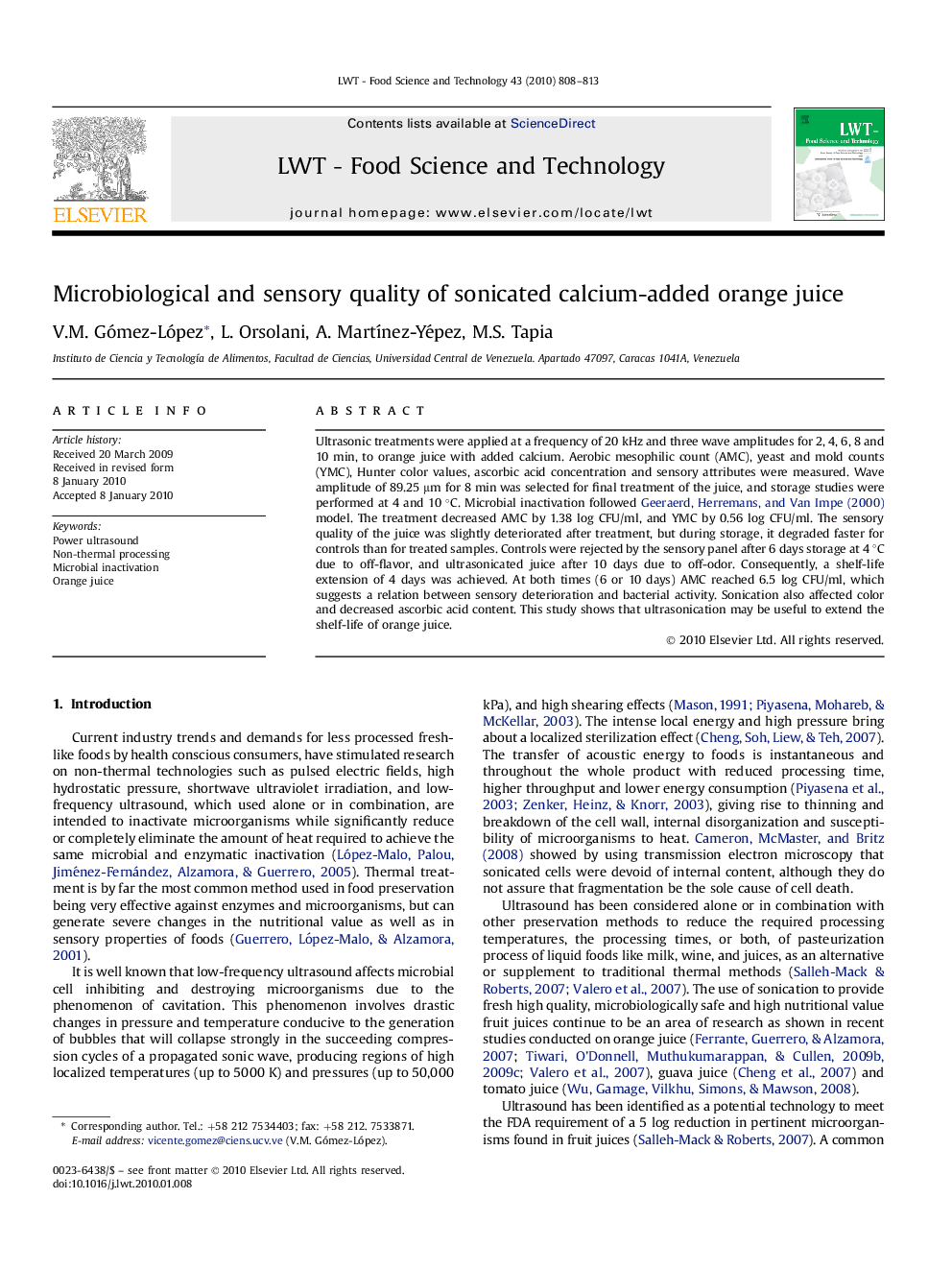| Article ID | Journal | Published Year | Pages | File Type |
|---|---|---|---|---|
| 4564319 | LWT - Food Science and Technology | 2010 | 6 Pages |
Ultrasonic treatments were applied at a frequency of 20 kHz and three wave amplitudes for 2, 4, 6, 8 and 10 min, to orange juice with added calcium. Aerobic mesophilic count (AMC), yeast and mold counts (YMC), Hunter color values, ascorbic acid concentration and sensory attributes were measured. Wave amplitude of 89.25 μm for 8 min was selected for final treatment of the juice, and storage studies were performed at 4 and 10 °C. Microbial inactivation followed Geeraerd, Herremans, and Van Impe (2000) model. The treatment decreased AMC by 1.38 log CFU/ml, and YMC by 0.56 log CFU/ml. The sensory quality of the juice was slightly deteriorated after treatment, but during storage, it degraded faster for controls than for treated samples. Controls were rejected by the sensory panel after 6 days storage at 4 °C due to off-flavor, and ultrasonicated juice after 10 days due to off-odor. Consequently, a shelf-life extension of 4 days was achieved. At both times (6 or 10 days) AMC reached 6.5 log CFU/ml, which suggests a relation between sensory deterioration and bacterial activity. Sonication also affected color and decreased ascorbic acid content. This study shows that ultrasonication may be useful to extend the shelf-life of orange juice.
